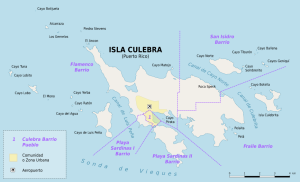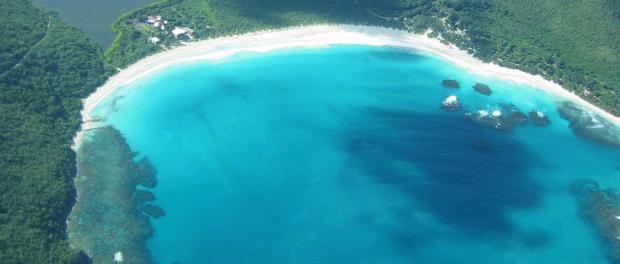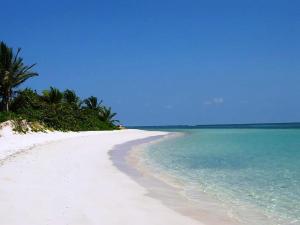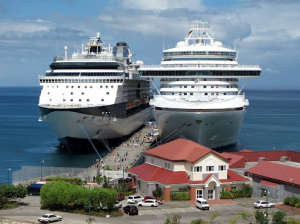Culebra – From Off- to On- the Beaten Path?
I was paddling along in my kayak, floating over a coral reef on which purple and yellow sea fans waved lazily in the current, when something broke the surface ahead of me. A snorkeler? No, it was a hawksbill turtle, which seemed as surprised to see me as I was to see it, though not as delighted. The turtle gulped some air, flexed its fin feet, as graceful in the water as the brown pelicans passing nearby were in the air, and effortlessly angled through the green water toward the sea grass 10 feet below.
I was floating off Culebra, a 12-square-mile island in a corner of the Caribbean that was quiet even in mid-January, with news of the polar vortex reaching us like word from a distant, far less habitable planet. During the 80-degree days, my family and I had a choice of a half-dozen spectacular beaches, often sharing a mile-long stretch of sand with a handful of people or with no one at all. During the cool, breezy nights, from our rented house, we could see in the distance the lights of massive cruise ships approaching the nearby island of St. Thomas. We felt fortunate that we were instead taking in this low-key, slow-speed island, 17 miles off the northeast coast of Puerto Rico.
As off-the-beaten-track as it seems, I found the island the easy way: In search of a place to belatedly celebrate our daughter’s 30th birthday, I idly went to Google for “best beaches” and discovered several top-10 lists that included Playa Flamenco on Culebra, which I had never heard of on a few earlier trips to the Caribbean. It was easy to get to: a direct flight to San Juan, followed by a quick trip by ferry or small plane out to the island. Its reputation among travelers looking for a quiet escape seemed to be growing, with additional flights added this year. It was relatively un developed, because of its modest size and because tourism gained a toehold only after local protests ended its use as a weapons testing ground by the United States Navy in 1975.
developed, because of its modest size and because tourism gained a toehold only after local protests ended its use as a weapons testing ground by the United States Navy in 1975.
Some historians believe Columbus stopped by Culebra on his second voyage in 1493, and local lore says it was long a hide-out for pirates preying on the Caribbean trade. In 1909, President Theodore Roosevelt created the Culebra National Wildlife Refuge on part of Culebra and some of the tiny out islands that surround it.
To read full article, go to http://www.nytimes.com/travel/guides/caribbean-and-bermuda/puerto-rico/culebra/overview.html




Leave a comment